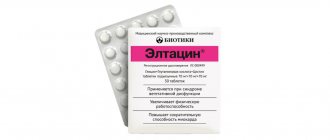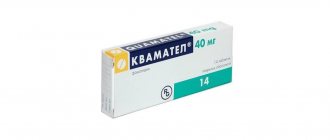Many antibiotics have universal action. For example, the drug "Cifran" is used to treat bacterial infections of the throat, mouth, nose, abdominal organs, urinary tract and other systems. The product is affordable and gives a fairly good effect.
Antibiotic "Cifran": composition and description
"Cifran" is an antibiotic whose active ingredient is ciprofloxacin in the form of lactate. Additional components are silica gel, sodium salts, magnesium salts, talc and others. Available in the form of tablets and solution. Each ml of solution contains 2 mg of active substance.
The antibiotic affects different types of bacteria - gram-positive and gram-negative. They destroy microorganisms resistant to penicillin, cephalosporin and other active substances. Moreover, suppression of bacteria is observed in all tissues and organs. As a result, inflammatory processes are suppressed and gradual recovery after infection occurs.
The product is stored under normal room conditions at a temperature of no more than 25 degrees. Direct sunlight should be excluded. Access for children is prohibited. The shelf life is 2 years from the date of production. After this time, you should not take tablets or solution.
Tsifran od tab p/o film prolong. 1000 mg 10 pcs
Pharmacological group:
Antimicrobial agent - fluoroquinolone.
Pharmacodynamics:
The bactericidal effect of fluoroquinolones is due to inhibition of the bacterial enzyme topoisomerase II (DNA gyrase). Topoisomerase II is required for normal bacterial DNA replication. This ATP-dependent process, in the absence of topoisomerase II, leads to uncontrolled replication of damaged DNA, and, consequently, to disruption of the synthesis of normal proteins in the bacterial cell. Ciprofloxacin has pronounced in vitro activity against a wide range of gram-negative and gram-positive bacteria. Ciprofloxacin acts on both reproducing and dormant microorganisms. As revealed by in vitro studies and use in clinical studies, ciprofloxacin is active against most strains of microorganisms: gram-positive (Bacillus anthracis, Enterococcus faecalis (most strains are relatively sensitive), Lysteria monocytogenes, Staphylococcus epidermidis, Staphylococcus saprophyticus). Staphylococcus aureus (methicillin-sensitive and penicillinase-producing strains, partially methicillin-resistant strains), Streptococcus pneumoniae, Streptococcus pyogenes; aerobic gram-negative (Campylobacter jejuni, Citrobacter diversus, Citrobacter freundii, Enterobacter cloacae, Escherichia coli, Haemophilus influenzae, Haemophilus parainfluehzae, Klebsiella pneumoniae, Moraxella catarrhalis, Morganella morganii, Neisseria gonorrhoeae, Proteus mirabilis, Proteus vulgaris, Providencia rettgeri, Pseudomonas aeruginosa, Salmonella typhi , Serratia marcescens, Shigella boydii, Shigella dysenteriae, Shigella flexneri, Shigella sonnei). In vitro studies showed ciprofloxacin at a minimum inhibitory concentration (MIC) of 90%) for the strains of the following microorganisms, but the clinical significance of these data is still being determined. Aerobic gram-positive: Staphylococcus haemolyticus, Staphylococcus hominis, Streptococcus pneumoniae. Aerobic gram-negative: Acinetobacter lwoffii, Aeromonas hydrophilia, Edwardsiella tarda, Klebsiella oxytoca, Legionella pneumophila, Salmonella enteritidis, Vibrio cholerae, Vibrio parahaemolyticus, Vibrio vulnificus, Yersinia enterocolitica. Other microorganisms: Mycobacterium tuberculosis (relatively sensitive). Most strains of Burkholderia cepacia and some strains of Stenotrophomonas maltophilia are resistant to ciprofloxacin, as are most anaerobic bacteria, including Bacteroides fragilis and Clostridium difficile.
Pharmacokinetics:
Pharmacokinetics: absorption: after oral administration, ciprofloxacin is rapidly absorbed from the gastrointestinal tract. Cifran® OD tablets provide a long-lasting, uniform release of ciprofloxacin, and the drug is taken only once a day. One dose of Cifran® OD 500 mg and Cifran® OD 1000 mg are able to maintain the required concentration of ciprofloxacin, which in other cases is provided by double use of conventional ciprofloxacin 250 mg or 500 mg, respectively: distribution: after administration of a single dose, maximum plasma concentrations (Cmax) are achieved in for 6 hours and are 1.3±0.4 μg/ml and 2.4±0.7 μg/ml for Cifran® OD 500 mg and Cifran® OD 1000 mg, respectively. The corresponding values of the area under the pharmacokinetic curve (AUC0-t) are 83±2.1 and 18.9±4.6 mcg*ml/h. Plasma protein binding ranges from 20% to 40%. Ciprofloxacin penetrates well into tissues and fluids of the body: lungs, skin, adipose tissue, muscles, cartilage and bone tissue, prostate gland, saliva, secretions of the mucous membrane of the nasal cavity and bronchi, sperm, lymph, peritoneal fluid and prostate secretions. Metabolism: ciprofloxacin is partially metabolized in the liver. Excretion: about 50% of the dose taken orally is excreted by the kidneys unchanged and about 15% in the form of active metabolites. Approximately 20-35% of the dose taken is excreted in the intestines. The half-life (T1/2) of Cifran® OD is about 6.5-7.5 hours. T1/2 can be prolonged with severe renal failure and in elderly people. Special patient groups
In case of impaired renal function: In patients with slightly impaired renal function, the half-life of ciprofloxacin may be slightly increased. In this case, it is necessary to correct the dosage regimen (See “Method of administration and dosage”). In case of impaired liver function: In preliminary studies in patients with stable liver cirrhosis, no significant changes in the pharmacokinetics of ciprofloxacin were noted. However, studies on the kinetics of ciprofloxacin in patients with acute liver failure have not been conducted.
Indications and contraindications
The drug is prescribed by a doctor to treat infections associated with pathogenic bacteria. There are quite a lot of indications for use. The medicine is used in the presence of diseases of the respiratory system:
- pneumonia;
- bronchiectasis pathology;
- cystic fibrosis;
- bronchitis of various forms - acute, chronic;
Throat and ear diseases:
- pharyngitis;
- otitis of various origins;
- frontal sinusitis;
- throat pathology tonsillitis;
- sinusitis disease.
Pathologies of the kidneys and urinary tract:
- cystitis;
- chancroid;
- endometritis;
- adnexitis;
- pyelonephritis;
- tubular abscess;
- salpingitis disease;
- infectious pathology chlamydia;
- oophoritis;
- gonorrhea.
Infectious pathologies of organs located in the abdominal cavity::
- salmonellosis;
- peritonitis;
- cholera;
- typhoid fever;
- shigellosis.
The drug can also be prescribed for the treatment of osteomyelitis, sepsis, skin ulcers (if they are infected), septic arthritis, burns of various degrees, phlegmon, bedsores, dysentery and empyema.
The product has few contraindications - “Cifran” is not recommended for use only in certain cases:
- pregnancy at all stages;
- breastfeeding period;
- individual intolerance to the active or auxiliary components, allergic reactions.
Cifran, 10 pcs., 250 mg, film-coated tablets
Severe infections, staphylococcal infections and infections caused by gram-positive and anaerobic bacteria
When treating severe infections, staphylococcal infections and infections caused by anaerobic bacteria, ciprofloxacin should be used in combination with appropriate antibacterial agents.
Infections caused by Streptococcus pneumoniae
Ciprofloxacin is not recommended for the treatment of infections caused by Streptococcus pneumoniae due to its limited effectiveness against the pathogen.
Genital tract infections
For genital infections suspected of being caused by strains of Neisseria gonorrhoeae resistant to fluoroquinolones, information about local resistance to ciprofloxacin should be taken into account and the sensitivity of the pathogen should be confirmed by laboratory tests.
Urinary tract infections
Resistance to fluoroquinolones in Escherichia coli, the most common pathogen causing urinary tract infections, varies depending on the region of the Russian Federation. When prescribing, it is recommended to take into account the local prevalence of Escherichia coli to fluoroquinolones.
Heart disorders
Ciprofloxacin has an effect on prolongation of the QT interval (see section "Side effects"). Given that women have a longer average QT interval compared to men, they are more sensitive to drugs that cause QT prolongation. Elderly patients also have increased sensitivity to the effects of drugs that prolong the QT interval. Ciprofloxacin should be used with caution in combination with drugs that prolong the QT interval (for example, class IA and III antiarrhythmic drugs, tricyclic antidepressants, macrolides and antipsychotic drugs) (see section "Interaction with other drugs"), or in patients with increased risk of QT prolongation or development of cardiac arrhythmias (eg, congenital long QT syndrome, uncorrelated electrolyte imbalances such as hypokalemia or hypomagnesemia, and cardiac conditions such as heart failure, myocardial infarction, bradycardia).
Use in children
It was found that ciprofloxacin, like other drugs of this class, causes arthropathy of large joints in animals. When analyzing the current data on the safety of ciprofloxacin in children under 18 years of age, most of whom have cystic fibrosis, no connection has been established between cartilage or joint damage with the drug. It is not recommended to use ciprofloxacin in children for the treatment of diseases other than the treatment of complications of pulmonary cystic fibrosis (in children from 5 to 17 years old) associated with Pseudomonas aeruginosa and for the treatment and prevention of pulmonary anthrax (after suspected or proven infection with Bacillus anthracis).
Hypersensitivity
Sometimes, after taking the first dose of ciprofloxacin, hypersensitivity to the drug may develop (see section “Side effects”), including allergic reactions, which should be reported to your doctor immediately. In rare cases, after the first use, anaphylactic reactions up to anaphylactic shock may occur. In these cases, the use of ciprofloxacin should be stopped immediately and appropriate treatment should be instituted.
Gastrointestinal tract
If severe and prolonged diarrhea occurs during or after treatment with ciprofloxacin, the diagnosis of pseudomembranous colitis should be excluded, which requires immediate discontinuation of the drug and the appointment of appropriate treatment (vancomycin orally at a dose of 250 mg 4 times a day). In this situation, the use of drugs that suppress intestinal motility is contraindicated.
Hepatobiliary system
Cases of liver necrosis and life-threatening liver failure have been reported with the use of ciprofloxacin. If you have the following signs of liver disease, such as anorexia, jaundice, dark urine, itching, a painful abdomen, you should stop taking ciprofloxacin (see section “Side effects”).
Patients taking ciprofloxacin who have had liver disease may experience a temporary increase in the activity of liver transaminases and alkaline phosphatase or cholestatic jaundice.
Musculoskeletal system
Patients with myasthenia gravis should use ciprofloxacin with caution, as exacerbation of symptoms may occur.
At the first signs of tendinitis (painful swelling in the joint area, inflammation), the use of ciprofloxacin should be stopped and physical activity should be avoided, because There is a risk of tendon rupture, and consult a doctor.
When taking ciprofloxacin, cases of tendinitis and tendon rupture (mainly the Achilles tendon), sometimes bilaterally, may occur within the first 48 hours after the start of therapy. Inflammation and rupture of the tendon may occur even several months after stopping treatment with ciprofloxacin. In elderly patients and in patients with tendon diseases who are simultaneously treated with corticosteroids. There is an increased risk of tendinopathy.
Ciprofloxacin should be used with caution in patients with a history of tendon diseases associated with quinolones.
Nervous system
Ciprofloxacin, like other fluoroquinolones, can provoke seizures and lower the seizure threshold. Patients with epilepsy and previous diseases of the central nervous system (for example, a decrease in the seizure threshold, a history of seizures, cerebrovascular accidents, organic brain lesions or stroke) due to the risk of developing adverse reactions from the central nervous system. ciprofloxacin should be used only in cases where the expected clinical effect outweighs the possible risk of side effects of the drug.
Cases of status epilepticus have been reported when using ciprofloxacin (see section "Side effects"). If seizures occur, use of the drug should be discontinued. There is a risk of developing mental reactions that may occur even after a single dose of ciprofloxacin. In rare cases, depression or psychotic reactions may progress to suicidal thoughts and suicide attempts, including completed ones (see section "Side effects"). In case of development of any side effects from the central nervous system, including mental disorders, it is necessary to immediately discontinue the drug Cifran® and begin appropriate therapy. In these cases, it is recommended to switch to therapy with another antibiotic other than fluoroquinolones. if possible.
In patients taking fluoroquinolones. including ciprofloxacin, cases of sensory or sensorimotor polyneuropathy and hypoesthesia have been reported. dysesthesia or weakness. If symptoms such as pain, burning, tingling, numbness, or weakness occur, patients should inform their doctor before continuing to use the drug.
Skin
Photosensitivity reactions may occur when taking ciprofloxacin, so patients should avoid contact with direct sunlight and UV light. Treatment should be discontinued if symptoms of photosensitivity are observed (for example, changes in the skin reminiscent of sunburn, see section “Side effects”).
Dysglycemia
As with other fluoroquinolones, changes in blood glucose concentrations, including hypo- and hyperglycemia, are possible when using ciprofloxacin. During therapy with ciprofloxacin, dysglycemia may more often occur in elderly patients and patients with diabetes mellitus receiving concomitant therapy with oral hypoglycemic drugs (for example, sulfonylureas) or insulin. When using ciprofloxacin in such patients, the risk of developing hypoglycemia, including hypoglycemic coma, increases. It is necessary to inform patients about the symptoms of hypoglycemia (confusion, dizziness, ravenous appetite, headache, nervousness, palpitations or increased pulse rate, pale skin, perspiration, trembling, weakness). If the patient develops hypoglycemia, treatment with ciprofloxacin should be stopped immediately and appropriate therapy should be initiated. In these cases, it is recommended to switch to therapy with an antibiotic other than a fluoroquinolone, if possible. When treating with ciprofloxacin in elderly patients and patients with diabetes mellitus, careful monitoring of blood glucose concentrations is recommended.
Cytochrome P450
It is known that ciprofloxacin is a moderate inhibitor of CYP 450 1A2 isoenzymes. Caution should be exercised when simultaneous use of ciprofloxacin and drugs metabolized by these enzymes, such as tizanidine, theophylline, methylxanthine. caffeine, duloxetine. ropinirole, clozapine, olanzapine, agomelatine. since an increase in the concentration of these drugs in the blood plasma, due to the inhibition of their metabolism by ciprofloxacin, can cause specific undesirable reactions. The simultaneous use of ciprofloxacin and tizanidine is contraindicated.
To avoid the development of crystalluria, it is not permissible to exceed the recommended daily dose; sufficient fluid intake and maintaining an acidic urine reaction are also necessary.
In vitro, ciprofloxacin may interfere with the bacteriological study of Mycobacterium tuberculosis, inhibiting its growth, which can lead to false negative results when diagnosing this pathogen in patients taking ciprofloxacin.
Side effects
Side effects may occur when taking the drug:
- decreased blood pressure;
- arrhythmia;
- increased heart rate;
- nausea;
- loss of appetite;
- stomach ache;
- diarrhea;
- cholestatic jaundice;
- increased anxiety;
- headaches;
- sleep problems;
- increased fatigue;
- pain perception disorders;
- tinnitus;
- taste disorders;
- hematuria;
- glomerulonephritis;
- crystallurgy;
- dysuria;
- interstitial type nephritis.
Allergic reactions are also possible - urticaria, fever. If such symptoms occur, treatment should be stopped. You will need to consult a doctor - the drug may need to be changed.
Instructions for use of tablets "Cifran"
The drug is taken on an empty stomach, since in this case the therapeutic effect will be maximum. The dosage depends on the disease:
- urinary tract diseases (without complications): 250 mg of active substance every 12 hours;
- prostatitis, urinary tract diseases with complications – 500 mg every 12 hours;
- diseases of the throat, nose, pathologies of the respiratory system, as well as typhoid fever - 500 mg every 12 hours.
The drug "Cifran ST" is taken after meals - do not chew the capsules, wash it down with plenty of water. The standard dosage is 250-300 mg of the active substance every 12 hours.
The drug "Cifran OD" is used before meals. Standard dosage – 250 mg of active substance every 8 or every 12 hours (i.e. 3 or 2 times a day, respectively)
In case of overdose, pronounced adverse reactions appear. In this case, the intake is suspended and a large amount of water is taken. If necessary, symptomatic treatment is indicated.
Attention!
During treatment, you should drink water regularly to prevent dehydration. You should also avoid prolonged exposure to the sun and tanning.
CIFRAN OD
Interaction
Due to inhibition of microsomal enzymes in the liver, it increases the concentration of i.
prolongs T1/2 of theophylline and other xanthines (for example, caffeine), oral hypoglycemic drugs (for example, glibenclamide), indirect anticoagulants (for example, warfarin and its derivatives). If it is necessary to use it together with drugs of these groups, it is necessary to monitor the concentration of the drug in the blood and adjust the dosage regimen accordingly. In the presence of antacids containing magnesium hydroxide or aluminum hydroxide, the absorption of ciprofloxacin is reduced. Thus, the simultaneous use of these drugs should be excluded. In such cases, ciprofloxacin should be taken either 1-2 hours before or 4 hours after taking these drugs. Didanosine reduces the absorption of ciprofloxacin. This is due to the formation of complexes with magnesium salts contained in didanosine preparations.
When used together with probenecid and other drugs that block tubular secretion, the renal excretion of ciprofloxacin decreases.
Metoclopramide accelerates the absorption of the drug, which leads to a decrease in the time it takes to reach Cmax.
Co-administration of uricosuric drugs leads to a slower elimination (up to 50%) and an increase in plasma concentrations of ciprofloxacin.
When combined with other antimicrobial drugs (beta-lactam antibiotics, aminoglycosides, clindamycin, metronidazole), synergism is usually observed; can be successfully used in combination with azlocillin and ceftazidime for infections caused by Pseudomonas spp.; with mezlocillin, azlocillin and other beta-lactam antibiotics - for streptococcal infections; with isoxazolylpenicillins and vancomycin - for staphylococcal infections; with metronidazole and clindamycin - for anaerobic infections. Ciprofloxacin enhances the nephrotoxic effect of cyclosporine. There is an increase in serum creatinine concentration. In such patients, it is necessary to monitor this indicator 2 times a week.
Concomitant use of tizanidine with ciprofloxacin, which is an inhibitor of the CYP1A2 isoenzyme, leads to a 10-fold increase in the AUC of tizanidine. The result of combined use may be a clinically significant and prolonged decrease in blood pressure, leading to drowsiness, dizziness, and inhibited psychomotor reactions.
In patients receiving therapy with ciprofloxacin and phenytoin, variability (decrease or increase) in the concentration of phenytoin in the blood plasma was noted.
Combined use with nonsteroidal anti-inflammatory drugs (NSAIDs) increases the likelihood of side effects of ciprofloxacin on the central nervous system (risk of seizures).
Absorption of ciprofloxacin when administered orally decreases after cytotoxic therapy with antitumor and immunosuppressive drugs.
Drug interactions
If you use "Cifran" together with "Theophylline", the concentration of the latter in the blood increases. Therefore, it is necessary to maintain a time interval of at least 4 hours. A similar rule applies to drugs that contain sucralfate or the following compounds:
- magnesium;
- gland;
- aluminum;
- zinc
Combined use with non-steroidal anti-inflammatory drugs increases the effect of Cifran on the nervous system. It should also be noted that when taking Warfarin together, you will need to monitor the condition with regular coagulation tests.
Attention!
During treatment, alcoholic beverages should be avoided. It is also undesirable to drive a car - concentration may decrease and reaction speed may slow down.








